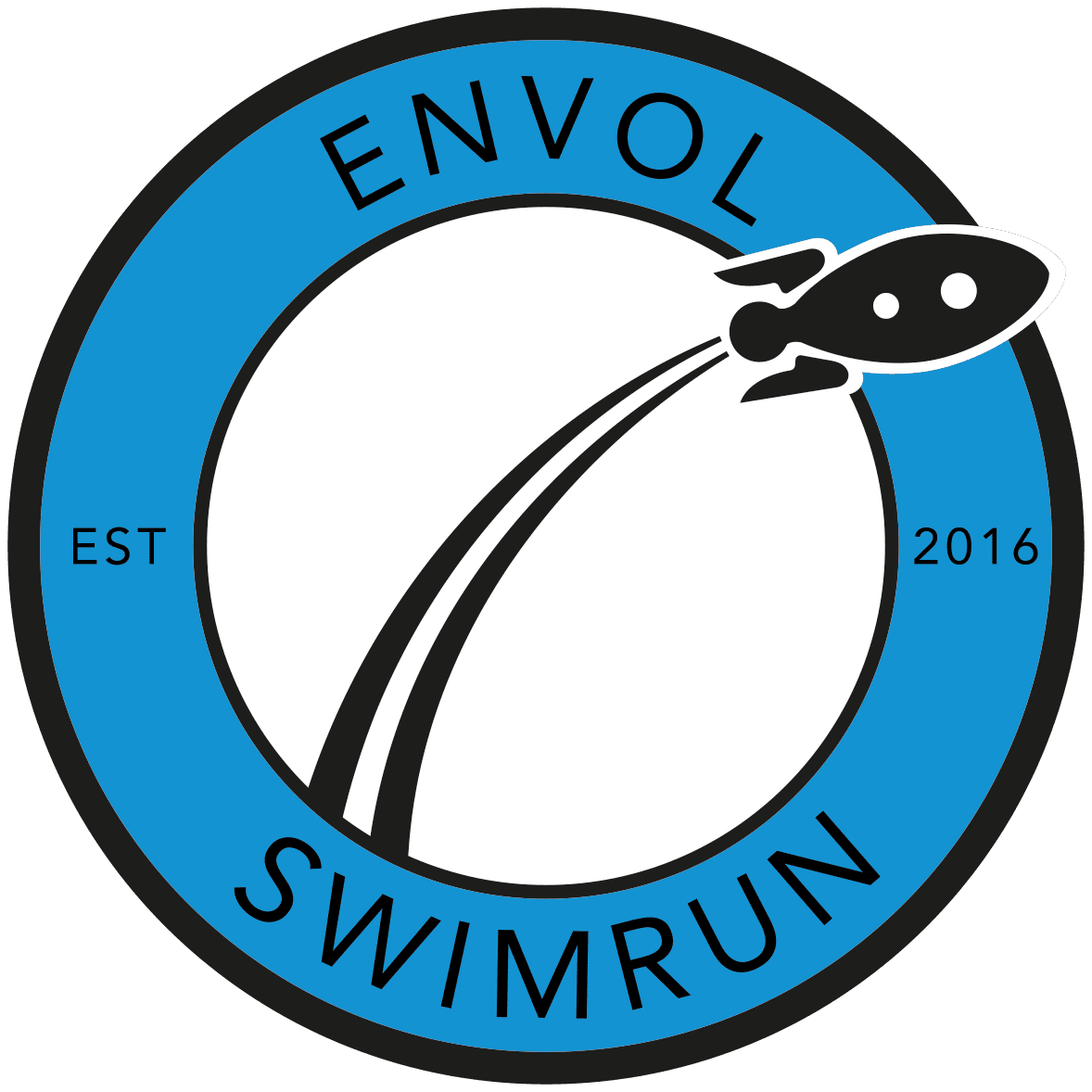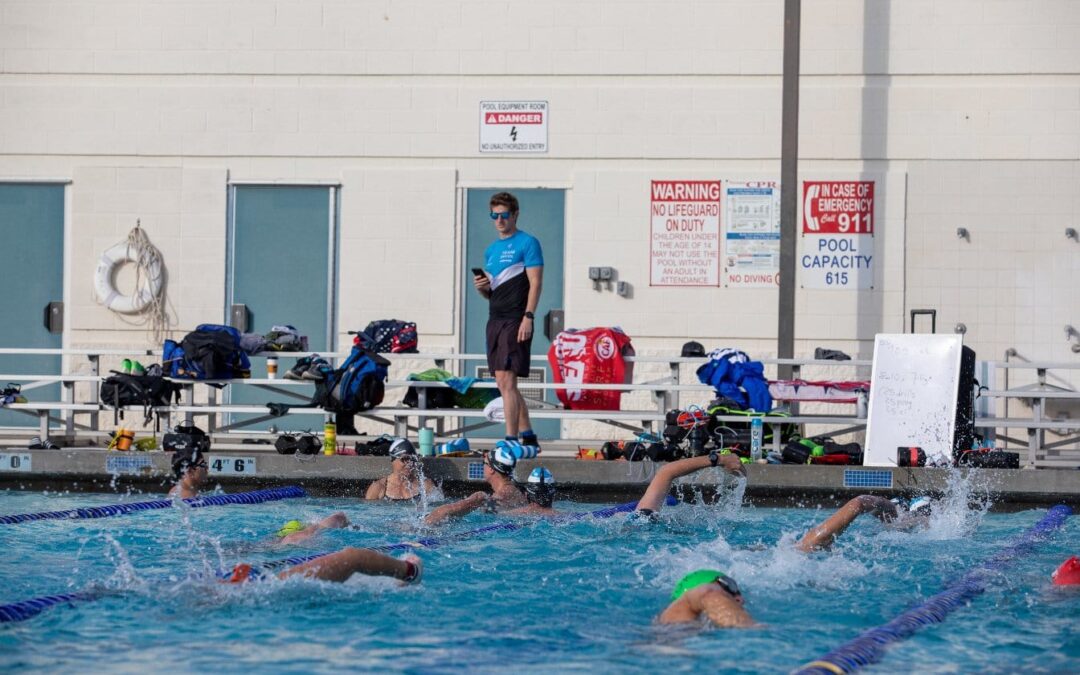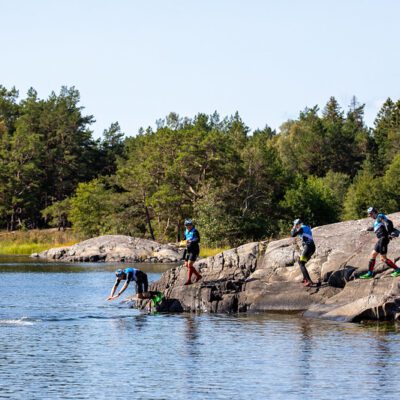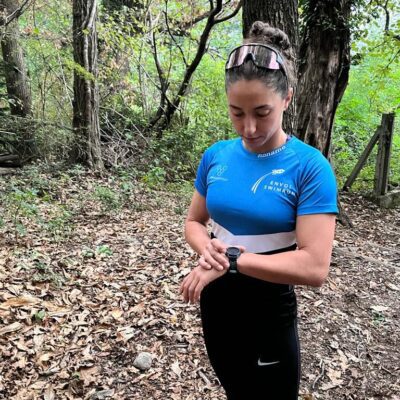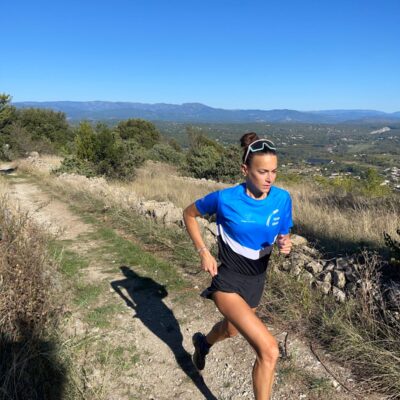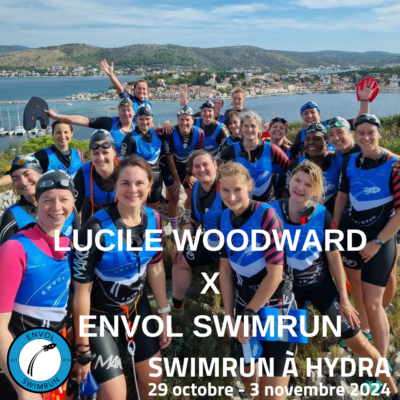Written by coach Tom Jenkinson
In many of the sessions, we provide pacing guide lines with RPE (Rating of Perceived Exertion) using his simple two-level intensity range: EASY and HARD. EASY is for aerobic development, and HARD is for strength / muscular endurance and threshold work. These are translated to pacing ranges based on percentages of threshold pace in TrainingPeaks.
EASY – You should be able to swim “comfortably”. For EASY intervals, you should:
- Finish each rep being able to talk easily in FULL sentences, in other words, be breathing comfortably.
- Be able to go again after the (short) rest period.
- Feel the “swim” muscles working, but not burning.
- This will be typically at Zone 1 and Zone 2 pace.
HARD – For swim sets with 25 and 50 meter reps, HARD is used for building strength and muscular endurance, so the focus of these sets is to get the swim muscles working. The distance is short, the rest is high to reduce the effect on the cardiovascular system; heart rate and breathing rate will increase over time but is not the focus.
Swim sets with reps over 50m are to work on anaerobic threshold / lactate tolerance. These sets work the muscles and cardiovascular system evenly – burning muscles and burning lungs, pounding heart!
Manage your effort effectively:
- Assess your form/readiness on the day, swim HARD for how you feel on that day.
- Swim HARD for the WHOLE distance; HARD is appropriate to the distance swum.
- Swim each rep consistently HARD – HARD is always HARD, the pace might drop over the duration of the session (not drastically), but the effort should be the same.
- This will be Zone 3, 4 or 5 pace depending on the length of the interval.


This is the Way!
If you are new to structured swim workouts, you might be wondering why we do the things we do? After all, some of you will approach training quite differently. “If I have an hour I just run for an hour!” – So why do we break the swim sessions down into short intervals? Do you really need to hold the rest intervals?
The goal of each session is to maximise the training effect
The training effect is a balance of stress and recovery. Recovery is a part of training, not the absence of it! The target effect differs from session to session but relates to the deliberate training of an energy system. For swimrunners, and open water swimmers, we are looking to develop an efficient aerobic system supported by a decent threshold tolerance and resilient muscular endurance.
To control the intensity, swim sets and rest periods ensure the body (or your ego) does not overexert. For aerobic training, the intensity is (relatively) low, the sets are longer, and the rest periods shorter. Threshold and strength sets will be shorter, faster/harder, and require more rest.
A secondary training effect is related to the neuromuscular system and skill acquisition. The neuromuscular system is responsible for passing messages to the working muscles, not just to “move the arms in a somewhat circular motion” but on the details – such as hand entry position and other fine neuromuscular adaptations.
Brett Sutton: “One of the most frequent questions asked by athletes and coaches is why in swimming do we gravitate to shorter distance reps done many times? If an Ironman race is 3.8km, why swim 40 x 100m instead of a straight 4km to ‘get the distance? The answer is about technique and the ability of the individual athlete to hold the stroke.”
Water is 830x denser than air
Moving through it effectively and efficiently takes real focus, especially for those that have not learned to a sufficient degree at a young age.
We all have a choice to train with focus/purpose/intention; do I choose to swim up and down with my thoughts elsewhere, or do I control as much of the experience as I can? Every training session is an opportunity for development, but development will be limited and compromised unless you take control of your actions and the process.
Wayne Goldsmith: “Swimming fast is about the swimmer’s capacity to maintain maximum speed, outstanding technique, and brilliant skills. You don’t learn this by swimming a lot of laps at mediocre speeds with terrible technique and awful skills.”
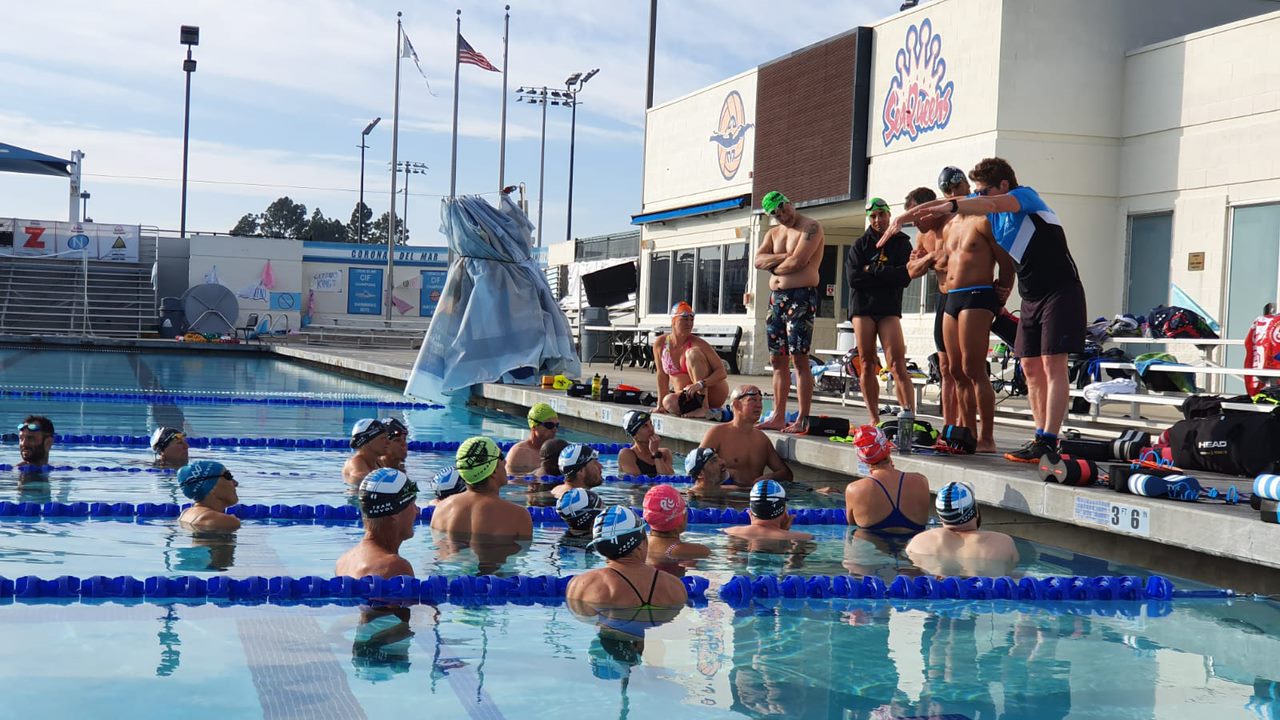
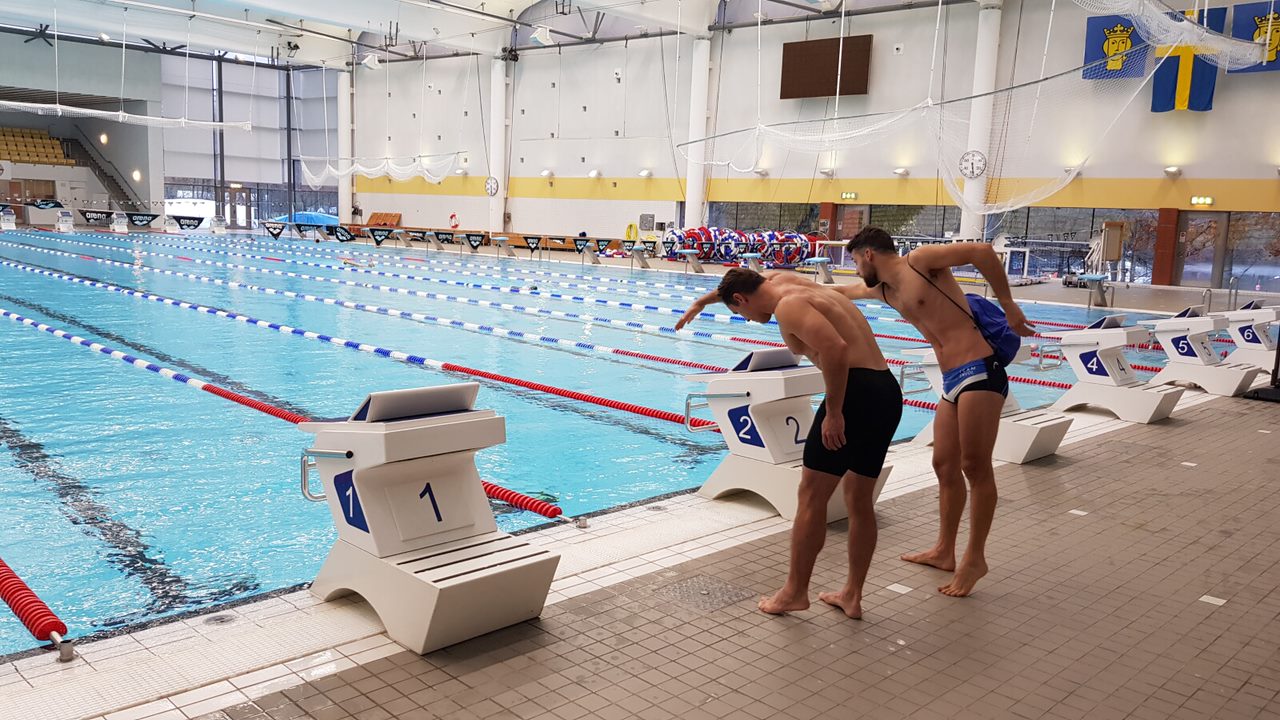
A little quality (hard work) every session
Traditionally, single-sport athletes follow a linear training periodization – focusing on one energy system at a time, at various points of a season, leading into race day. Whereas most of the Envol members are swimrun athletes, race a variety of distances, with an undefined race season, and have various energy system demands in each race.
Therefore, each session aims to create a mix of stimuli to hit the different energy systems. The overall approach can be termed a spiral system of reverse periodization, spiraling through different intensities by using sets, reps, and rest periods to achieve the desired training effect.
Joel Filliol: “Include some quality in every swim. If you are swimming less than 5x per week, having easy swims is a waste of time. Always include quality, from band to paddles, to sprints, in every swim.”
Mono-speed/mono-stimulus training is suboptimal for swimrunners. Therefore, each session has a mix of tools (gear) and swim paces. These are there to create a good mix of stresses and each comes with an appropriate recovery interval to optimize the training stimuli.
Respect the rest intervals
Rest periods are matched with the reps, sets, and intensity to facilitate the desired training effect. Are you disciplined with your resting habits? Who among you skips the rest, reduces the rest, or extends the rest?
By having less or no rest, you will compromise your potential development (sabotaging your energy system and neuromuscular adaptations). Likewise, by extending the rest periods you also alter the way the body reacts to the session.
Envol Swim Coaching Tips
- Forget maximising meters or laps during swim time. Come to the swim session with a mindset of purposeful practice – it changes everything.
- Believe in the sessions – there is a deliberate reason the sessions are designed the way they are.
- Become best friends with the wall clock (not your “Garmin”) and stick to the prescribed rest intervals.
- Rest with discipline and honesty.
- The main path to swimming improvement is not simply to make more energy available through maximising aerobic fitness, it is to waste less energy by improving how you move through the water via skill acquisition.
A world-class runner is about 90% mechanically efficient, meaning that 90 of every 100 calories expended produce forward motion, while approximately 10 are lost to heat management, ground friction, wind resistance, etc. Because water is denser than air and highly unstable as a medium for applying power, a world-class swimmer is only 9% mechanically efficient. The typical adult swimmer has an energy efficiency lower than 3% – technique matters even with gear.
Swim terms and abbreviations can be confusing, Here is a list of common swim terms you might see in the session descriptions:
- RI = Rest Interval, the time in seconds you get to rest before the next interval, sometimes also written +10s or +20s etc.
- OACI = start On Any Comfortable Interval, the lane-lead chooses a start time on the clock for your intervals
- B3, B4 etc = These are breathing patterns, B3 breathe every 3rd stroke, B4 breathe every fourth stroke etc. For even numbers these may be followed by L or R for Left or Right.
- DWS = Deep Water Start – start away from the wall with no push off.
- BOLFS . Breathe On Least Favorite Side
- DPS = Distance Per Stroke; take a few strokes as you can to cover the distance.
- FREE/FS/CR = Freestyle with no aids/tools
- PULL or p = Use a Pull Buoy
- PADDLES or P = Use Paddles
- FINS = Use Fins
- ↑ = Out
- ↓ = Back
- PFQ = Pretty F***ing Quick = Sprint = Swim as HARD as you can! – But not so hard that you get FTD (Full Technical Disintegration!)
- Negative Split = Go faster for the second half of the set distance than the first half
- Streamline = Underwater body position after diving or pushing off the wall which maximizes swim speed and efficiency.
- Build = Increase speed throughout the interval.
- Descend 1 to 3 = Descent in time. Each of the three swim intervals is faster than the last. Ascend would be the opposite.
- Drill = do a specific technique drill Swim Drill Videos
Train Hard and Have Fun
The Envol Coaches

Have fun and train hard!
Did you know that Envol also provides single discipline plans for distance running and open water swimming? For more information contact info@envolcoaching.net
